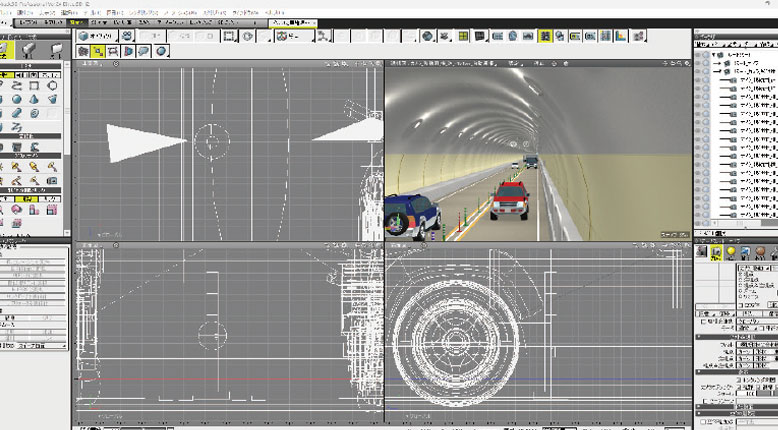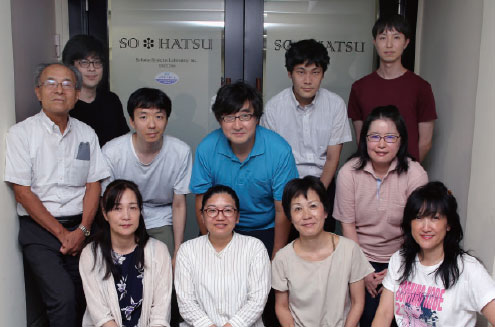Sohatsu Systems Laboratory Inc. designs and develops various devices for monitoring and controlling disaster management in tunnels.
"In spite of its danger, the reality of tunnel fire is not well known. That is why we came up with the idea of creating a VR tool to help many people understand it", recalls Mr. Matsumoto, head of the company's Development Department.
For example, to make the movement of smoke during a fire as realistic as possible, he wanted to express the smoke spreading from the point of fire and covering the lighting at the top of the tunnel, making the area below pitch black. Using "Fire Dynamics Simulator (FDS)", the Computational Fluid Dynamics (CFD) analysis software developed by the National Institute of Standards and Technology (NIST), he accurately visualized the movement of smoke by calculating it. However, he faced expression issues such as angular drawing of tunnel walls, and in response to President Ichiro Nakahori's desire to create a more realistic presentation, the Development Department decided to tackle this task.
While considering the application of various software, the company decided to use Shade3D in 2021, as it had created 3D tunnels using the former Shade7 more than ten years ago. Ms. Yamagishi, Chief of the department using the software for the first time, and members of the department went through a trial-and-error process to find out what functions Shade3D included and how it would ultimately be integrated with the aforementioned FDS. First, she used Shade3D to create a video of a tunnel and various vehicles driving through it. Next, smoke created with FDS was superimposed on the video to represent the ever-changing situation of an accident occurring in the tunnel and smoke being generated. Ms. Yamagishi said that when creating the tunnel, there was a lot of repetitive structure such as interior walls, rubber poles, handrails, and lighting, and Shade3D's ability to quickly recreate the shape by linking made it possible to create the model efficiently.
 |
 |
| Mr. Matsumoto, Director of Development Department |
Ms. Yamagishi, Chief of Development Department |
The "VR Tunnel Simulation" currently being developed using this technology is a tool to learn how smoke spreads in a tunnel during a fire and what operators need to do. The display shows the following information: Two types of camera images including visible light and infrared light that can see through a certain amount of smoke, the spread of smoke expressed in 2D, and the status of the smoke exhaust control (e.g. "zero wind speed", "front smoke exhaust in progress") and the ventilation status using jet fans linked to this control. Director Matsumoto said that they are testing various functions to simulate a series of emergency procedures. For example, if an accident were to occur in a 3km tunnel, they would switch several cameras to guide people and control the smoke exhaust so that the evacuees could get away from smoke. Once the evacuation is complete, all the smoke is pushed out in one direction to allow fire engines to enter the tunnel.
"Shade3D is intuitive and easy to use, and is recommended for those who want to start with 3D modeling and move on to creating animations." Ms. Yamagishi said that Shade3D should be easy for beginners to use, based on her experience that it was easier to use than other 3DCG software she had used, even though it was her first time using Shade3D.
Director Matsumoto wanted to more realistically express the details of the changes in lighting over time, based on the actual phenomenon that as the smoke rises to the top of the tunnel, the area below becomes darker. He assessed that he could model to a certain level by using and linking Shade3D and FDS, but pointed out that it would need to be improved to the level required by experts. In order to solve these issues and create VR that realizes more advanced and integrated simulations, the company is considering adopting "UC-win/Road", real-time 3D simulation software, together with Shade3D.
 |
 |
"VR Tunnel Simulation", a fire simulation training tool for tunnel managers and operators. (left)
Shade3D is used to model and create animations of tunnel interiors and moving vehicles. (right) |
|


